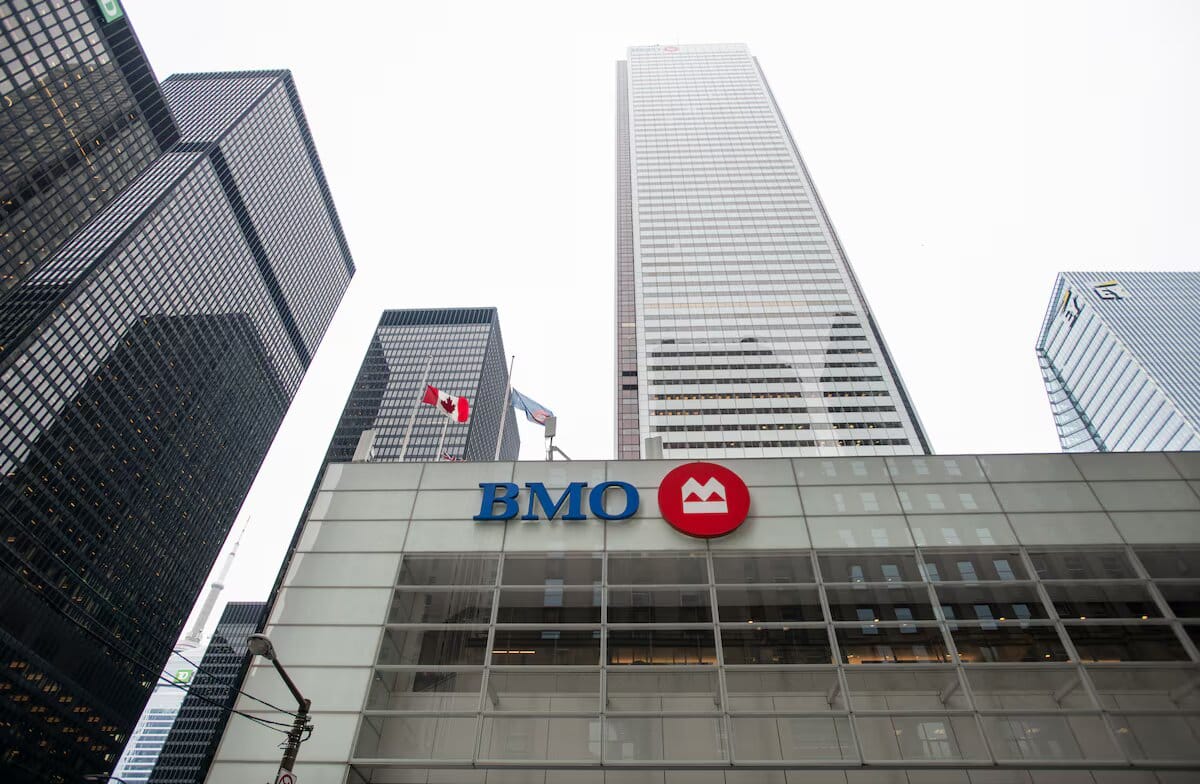Shares of Bank of Montreal fall as the company misses projections and increases loan loss reserves
For the fiscal third quarter ending July 31, BMO reported net income of $1.86 billion, or $2.48 per share, up from $1.56 billion, or $2.12 per share, a year earlier.

Bank of Montreal (BMO) shares fell as much as 6.4% in morning trading after the bank reported a profit that fell short of analysts’ expectations, partly due to challenges in its U.S. retail segment.
For the fiscal third quarter ending July 31, BMO reported net income of $1.86 billion, or $2.48 per share, up from $1.56 billion, or $2.12 per share, a year earlier.
Adjusted earnings were $2.64 per share, below the $2.75 per share anticipated by Bloomberg analysts.
Provisions for credit losses, which the bank sets aside for bad loans, increased to $906 million from $492 million a year earlier.
This rise was attributed to the impact of prolonged high interest rates on clients.
This report follows BMO’s acquisition of U.S.-based Bank of the West last year for US$16.3 billion, which added nearly 1.8 million customers and over 500 branches to its American operations.
In its U.S. personal and commercial banking segment, net income declined by 9% year-over-year in U.S. dollars.
During a conference call, analysts questioned the large provisions for credit losses. BMO CEO Darryl White acknowledged that the increase in credit costs was higher than expected due to prolonged high interest rates, economic uncertainty, and shifting consumer preferences.
He noted that 15 accounts in the bank’s wholesale portfolio account for nearly 50% of its losses to date.
White explained that predicting loss timing is challenging, especially given the exceptional circumstances of COVID-19-related loans.
He anticipates that provisions will remain elevated in the near term but expects them to return to normal levels by 2025.
BMO maintained its quarterly dividend at $1.55 per share, an increase of 5% from the previous year.
In Canada, BMO's banking operations saw a 4% increase in earnings to $914 million, driven by a 7% rise in revenue. Loan balances were up 5%, credit card balances increased 18%, and average deposits rose 11%, supported by strong growth in term deposits.
Residential mortgages increased by $9.3 billion, and the bank forecasts a stronger housing market in 2025 due to lower mortgage rates and population growth.
Capital markets earnings surged by 32%, though earnings from the wealth-management division fell by 9%. The bank’s common equity Tier 1 capital ratio, a measure of resilience, decreased slightly from 13.1% to 13.0%, but was up 0.7% from a year earlier.
On the same day, Bank of Nova Scotia reported a dip in third-quarter profit as it set aside more funds for anticipated credit losses. Its provision for credit losses was $1.05 billion, up from $819 million the previous year.
Despite this, Scotiabank's shares rose by up to 2.7% after beating earnings-per-share expectations by a penny.
Last week, Toronto-Dominion Bank reported its first quarterly loss in 21 years due to a US$2.6 billion provision for anti-money laundering-related fines.





